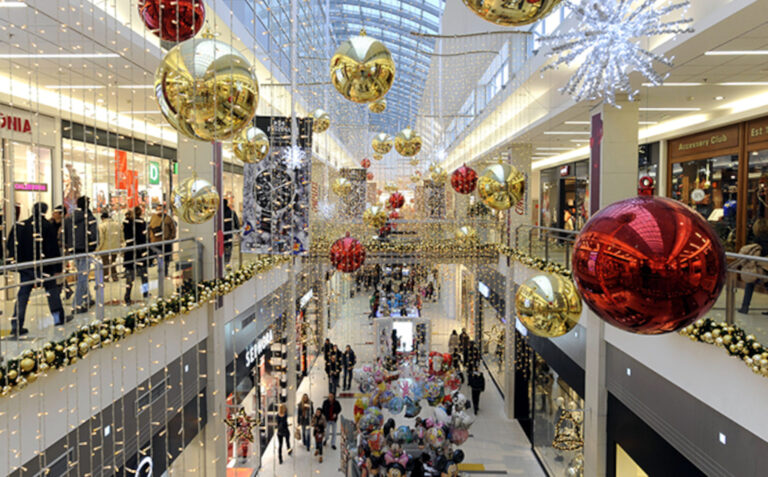The retail intelligence experts Springboard have released their forecast for the Christmas run-up period, which foresees a footfall decline month to month from September to November – but an increase during the December Christmas trading period.
Springboard anticipate a retail-space footfall decline of -4.9% in September, followed by a -2.5% reduction in October and a -0.3% fall in November, as consumers’ fears of the rising energy costs are expected to take effect on household budgets in October. However, from November to December, footfall is expected to increase by +6% because of the Christmas trading period.
Regardless of the Christmas run up footfall increase, Springboard say that the September to November declines will ‘eradicate the gains made over much of 2022’. As such, the gap from 2022 to 2019 will reach -18% – the widest since February 2022, when it stood at -20.7%.
The impact of the drop in footfall on a monthly basis between September and November means that in October and November footfall will also be lower than in the same months last year (-2.1% in October and -2.7% in November versus 2021), but footfall will return to positive territory in December with a rise of +4.2% from 2021.
Diane Wehrle, Spingboard insights director, explains the reasons behind the company’s forecast: “Covid heavily disrupted the two intervening years, but this year the drop in footfall will be more severe than in the same months pre-2019. This is due to consumers’ fears over the impact of the rise in energy costs, expected in October, on their household budgets.”
Although, “in contrast to the forecast for September, the drop in footfall in November this year will be mitigated by shoppers being likely to use the discounts available over the Black Friday period to buy Christmas presents with the hope of outrunning inflation.”
Ms Wehrle concludes: “Footfall will rise in [high street, retail parks, and shopping centres] from November to December, although the rise will be more subdued than in previous years – by +4.5% in high streets, by +5% in retail parks, but by +10% in shopping centres, which are the destination of choice for many shoppers when buying Christmas gifts due to the range of products that are available.”


